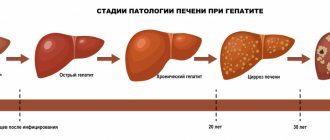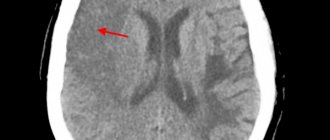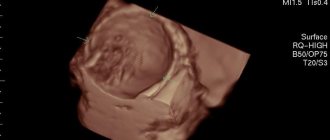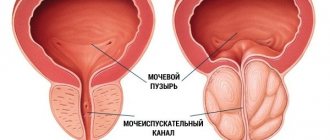Key Facts
- Hepatitis B is a viral infectious disease that affects the liver and occurs in acute or chronic form.
- Transmission of the virus most often occurs perinatally from mother to child, as well as through contact with blood or other biological fluids, in particular during sexual contact with an infected partner, unsafe injection practices, cuts with piercing instruments in medical practice and in domestic conditions, and also among people who inject drugs.
- WHO estimates that in 2021, there were 296 million people worldwide living with chronic hepatitis B (i.e. positive for hepatitis B surface antigen).
- An estimated 820,000 people died from hepatitis B in 2021, primarily as a result of hepatitis-related liver cirrhosis and hepatocellular carcinoma (primary liver cancer).
- As of 2021, 30.4 million (10)% of all people living with hepatitis B were aware of their infection, and 6.6 million (22%) of all diagnosed patients were receiving treatment. According to the latest WHO estimates, in 2021 the proportion of children under five years of age with chronic hepatitis B has fallen to just under 1%, compared with the decades before the introduction of vaccination (i.e. from the 1980s to the early 2000s). x years) this figure was about 5%.
- According to WHO estimates, in 2021, despite the availability of a highly effective vaccine, the number of people primarily infected with hepatitis B was about 1.5 million people.
- Hepatitis B is preventable through safe, accessible and effective vaccines.
Hepatitis B is a potentially life-threatening infectious liver disease caused by the hepatitis B virus (HBV). This disease is a major health problem worldwide. The infection can become chronic with a high risk of death from cirrhosis and liver cancer.
There is a safe and effective vaccine that provides 98–100% protection against hepatitis B. Prevention of viral hepatitis B helps prevent the development of complications such as chronic hepatitis and liver cancer.
Hepatitis B: carriage or disease leading to cirrhosis and cancer?
Hepatology, the study and development of new treatments for liver disease, has made incredible progress over the past two decades. Methods for accurate virological assessment of the activity of hepatitis C and B viruses in the human body, which are the most common causes of chronic hepatitis, cirrhosis, and liver cancer, have been developed and implemented. So-called “non-invasive” methods have been developed and are widely used, that is, without the use of liver biopsy, diagnosing the degree of liver damage, or establishing the stage of cirrhosis. Even more impressive progress has been made in the treatment of these diseases. We have discussed the problem of hepatitis C many times. One has only to add that a new era is opening in the treatment of hepatitis C - drugs with a direct antiviral effect have been developed and are already beginning to be used, thanks to which it is believed that within a decade it will be possible to achieve one hundred percent effectiveness of treatment. In this article we will talk about hepatitis B and new advances in its treatment.
The hepatitis B virus is 100 times more contagious than HIV (human immunodeficiency virus).
Despite the widespread introduction of vaccination against hepatitis B, the prevalence of the disease remains high. In different regions of Russia, the prevalence of carriage of the virus ranges from 1.5% to 11.5%. As with hepatitis C, the source of infection is the blood of an infected person. The routes of infection are similar: the use of non-sterile needles, instruments for various medical and non-medical (piercing, tattoos, manicure/pedicure) manipulations, the use of personal hygiene items of an infected person in everyday life (razor, scissors, toothbrush, etc.), unprotected sexual contact, transmission of the virus from an infected mother to her child. The hepatitis B virus is more stable in the external environment and more contagious than the hepatitis C viruses and human immunodeficiency viruses. Therefore, the natural routes of transmission of the B virus (sexual transmission and mother-to-child transmission) are more significant for this virus.
Effectiveness of vaccination
As of 2013, 183 Member States were vaccinating infants against hepatitis B as part of their national vaccination schedules, and 81% of children had received hepatitis B vaccination. This represents significant progress compared to 31 countries in 1992, when the World Assembly Health Council adopted a resolution recommending global vaccination against hepatitis B.
Additionally, as of 2013, 93 Member States have introduced hepatitis B dose provision at birth. Since 1982, more than one billion vaccine doses have been used worldwide.
In many countries where typically 8% to 15% of children had chronic hepatitis B virus infection, vaccination has reduced rates of chronic infection among immunized children to less than 1%.
How to protect yourself from hepatitis B?
The only means of protection is vaccination against hepatitis B, which is currently administered to all newborn children and adolescents. Adults with risk factors for infection should also be vaccinated. The hepatitis B vaccine is one of the safest vaccines in the world. Three-time administration of the vaccine according to a special scheme leads to the formation of specific antibodies that prevent the development of hepatitis B disease in 98% of those vaccinated. Immunity lasts for at least 8-10 years, but often remains for life.
Prevention
The main method of preventing hepatitis B is vaccination. WHO recommends that all newborns be vaccinated against hepatitis B as soon as possible after birth, within the first 24 hours of life if possible, followed by two or three doses of the vaccine at least four weeks apart to ensure full vaccination. Timely vaccination of children immediately after birth is an effective way to reduce the incidence of mother-to-child transmission of hepatitis B.
According to the latest WHO estimates, worldwide in 2021 the proportion of children under five years of age with chronic hepatitis B has fallen to just under 1%, compared with the decades before the introduction of vaccination (i.e. from the 1980s to early 2000s) this figure was about 5%.
This has achieved one of the Sustainable Development Goal targets for viral hepatitis elimination: reducing the prevalence of HBV infection among children under five years of age to less than 1% by 2021. This success was achieved in a number of regions with the exception of sub-Saharan Africa.
Increasing hepatitis B vaccination coverage worldwide over the past two decades has been a major public health achievement and has contributed to a decline in the incidence of hepatitis B infection among children.
In 2021, three-dose vaccine coverage reached 85% worldwide, up from around 30% in 2000. However, rates of newborn immunization against hepatitis B remain variable. Thus, the average rate of vaccination coverage with the first dose of hepatitis B vaccine immediately after birth is 43% worldwide, but in the WHO African Region it is only 6%.
A full course of vaccination produces protective antibodies in more than 95% of infants, children and young adults. Immunity acquired through vaccination lasts for at least 20 years and probably throughout life. Therefore, WHO does not recommend booster vaccinations for people who have completed the three-dose vaccine.
In countries with low or moderate endemicity of hepatitis B, vaccination is indicated for all unvaccinated children and adolescents under 18 years of age. In these countries, high-risk groups are more likely to become infected and should also be vaccinated. These risk groups include:
- individuals who frequently require blood or blood products, dialysis patients, and solid organ transplant recipients;
- prisoners in places of deprivation of liberty;
- injection drug users;
- persons who have household and sexual contact with people with chronic HBV infection;
- persons with multiple sexual partners;
- healthcare workers and other persons who may have contact with blood and blood products while on duty;
- International travelers who have not completed a full course of HBV vaccination and who are eligible for vaccination before departure to HBV-endemic areas.
The vaccine has an excellent safety and efficacy record and has reduced the proportion of children under five years of age with chronic HBV infection to just under 1% in 2021, compared with the decades before the introduction of the vaccine (i.e. since the 1980s). until the early 2000s), this figure was about 5%.
In addition to infant vaccination, which includes a timely first dose immediately after birth, WHO recommends prophylactic antiviral therapy to prevent mother-to-child transmission of hepatitis B. Pregnant women with a high concentration of HBV DNA (high viral load) and/or the presence of HBeAG in the blood are at high risk of transmitting the virus to their unborn child, even if the child receives the first dose of vaccine immediately after birth and completes the full course of vaccination against hepatitis B. Therefore, pregnant women with high The concentration of HBV DNA during pregnancy may indicate a prophylactic course of antiviral therapy to prevent perinatal HBV infection and protect the unborn newborn from the disease.
In addition to infant vaccination and prevention of mother-to-child transmission, HBV transmission can be prevented through blood safety measures, including quality screening of all donated blood and blood products used for transfusion. Globally, 97% of donated blood units were screened and quality controlled in 2013, but gaps remain. Effective measures to prevent the transmission of hepatitis B virus include ensuring safe injections and avoiding unnecessary injections and injections performed in unsafe conditions. Between 2000 and 2010, the rate of unsafe injections worldwide fell from 39% to 5%. In addition, one of the effective measures to prevent infection is to improve the safety of sexual intercourse, including minimizing the number of sexual partners and the use of barrier contraception (condoms).
Hidden disease
As with hepatitis C, the acute phase of the infection often occurs without jaundice. In the vast majority of cases, patients with acute hepatitis B recover and acquire lifelong immunity to re-infection (protective antibodies to viral proteins are detected in their blood serum). After infection, some people become carriers of the HBsAg virus protein, also called the “Australian antigen.” Carriage most often occurs when infected in childhood. In a small proportion of patients, acute hepatitis drags on and becomes chronic. Chronic hepatitis B, like chronic hepatitis C, often occurs latently and unnoticed for a long time. For many years, a person can feel absolutely healthy, and the first symptoms of the disease appear only at the late stage of liver cirrhosis, when the disease is more difficult to treat and the overall prognosis is unfavorable.
Hepatitis D
The infection is caused by the hepatitis D virus (HDV virus).
Quite a specific disease.
It cannot exist independently, and, as a rule, comes in combination with the hepatitis B virus (HBV).
The hepatitis D virus is transmitted during sexual intercourse or through the exchange of needles among intravenous drug users.
Relatively common transmission from an ill pregnant woman to the fetus.
It is possible to become infected through blood transfusions or dialysis, but this is very rare in developed countries.
What is important to know about the forms of hepatitis B virus infection?
Chronic infection can occur in two main forms:
The first form is inactive carriage of HBsAg. It is characterized by the absence of viral particles in the blood serum or their detection in a low titer, the absence of inflammation in the liver and, as a rule, a non-progressive course. With a decrease in immunity, inactive carriage of HBsAg can turn into the active form of hepatitis B.
The second form is chronic active hepatitis B. It is characterized by the presence of a large number of viral particles in the blood, the presence of inflammation in the liver, which is reflected in changes in the so-called liver tests (or enzymes), and a progressive course with the risk of developing cirrhosis and liver cancer. In recent years, it has been found that the higher the concentration of virus in the blood, or “viral load,” the higher the risk of developing cirrhosis and liver cancer.
It is impossible to distinguish between these two forms based on the patient’s well-being and only clinical signs of the disease (which, as with inactive carriage, may be completely absent in a patient with chronic hepatitis B).
Hepatitis B is an infectious disease of a viral nature that primarily affects the liver. It occurs in acute and chronic forms.
The causative agent of hepatitis B , the hepatitis B virus (HBV), belongs to the hepadnavirus family, DNA viruses that infect liver cells. The hepatitis B virus is extremely resistant to various physical and chemical factors: low and high temperatures, repeated freezing and thawing, ultraviolet radiation, prolonged exposure to an acidic environment. The virus is inactivated by boiling, autoclaving (120°C for 45 minutes), dry heat sterilization (180°C after 60 minutes), and exposure to disinfectants.
Routes of transmission of viral hepatitis B
There are many ways to become infected with hepatitis B. The most common are:
- sexually;
- from mother to child at birth;
- contact with the blood of an infected person;
- using the same toothbrush, razor, washcloth, manicure set;
- during medical manipulations for therapeutic and diagnostic purposes;
- use of unsterilized needles for ear piercing, piercing, acupuncture, tattooing;
- when using unsterile syringes (drug addicts);
- when patients receive blood products;
- when using drugs;
- when pre-chewing food for the child.
The hepatitis B virus is found in the saliva, tears, urine, and stool of infected individuals. It is believed that the hepatitis B virus does not penetrate through intact outer coverings (skin, mucous membranes). This means that hepatitis B is not transmitted through household contact, as well as through talking, sneezing, etc. d. Therefore, a person with hepatitis B is not dangerous to others. The patient should not be in social isolation. Only people who have been vaccinated and have previously had hepatitis B are guaranteed protection against In all other cases, when infected with the hepatitis B virus, the development of hepatitis is inevitable. The risk of infection among family members is low if personal hygiene rules are observed. The risk of infection is higher in a healthy spouse, so vaccination is necessary. Family members of a patient with chronic hepatitis B should be examined and vaccinated against hepatitis B with the appropriate vaccine. To prevent infection with the hepatitis B virus, hepatitis B vaccines are used. Contraindications for administering the vaccine are allergies to yeast and severe autoimmune diseases.
How does hepatitis B manifest?
Viral hepatitis B can be acute or chronic. The first symptoms of acute hepatitis B occur between 6 weeks and 6 months after infection. The symptoms of hepatitis A and hepatitis B are similar. They can only be recognized through a blood test. The initial period of hepatitis B begins with weakness, loss of appetite, nausea, pain in the right hypochondrium, low-grade fever, pain in the joints and muscles. Gradually, the disease enters its peak period—the icteric period. Jaundice staining of the sclera, itchy skin, dark urine (the color of beer), and light-colored feces appear. In 1/3 of cases, hepatitis B occurs in an anicteric and erased form. Asymptomatic forms are diagnosed during immunobiochemical studies in lesions and during screening studies. Asymptomatic forms of hepatitis B are characterized by the absence of clinical signs of the disease. The clinically pronounced (manifest) form is the acute cyclic icteric form with cytolytic syndrome, in which the signs of the disease are most fully expressed. Periods of illness :
- incubation,
- preicteric (prodromal),
- icteric (midst)
- and convalescence.
The duration of the incubation period (from the moment of infection to the appearance of symptoms of the disease) is from 6 weeks. up to 6 months The pre-icteric period lasts on average from 4 to 10 days, less often it is shortened or prolonged to 3-4 weeks. It is characterized by astheno-vegetative, dyspeptic, arthralgic syndromes and their combinations. At the end of the pre-icteric period, the liver and spleen enlarge, signs of cholestasis appear - itching, dark urine and discoloration of feces. Some patients (10%) experience rashes and signs of vasculitis. During laboratory examination, urobilinogen and sometimes bile pigments are detected in the urine, and increased ALT activity is detected in the blood. The duration of the icteric period is 2–6 weeks. with fluctuations from several days to several months. Initially, the sclera and mucous membranes become jaundiced, and later the skin becomes stained. The intensity of jaundice usually corresponds to the severity of the disease. Symptoms of intoxication remain pronounced and often increase: weakness, irritability, headache, shallow sleep, decreased appetite to the point of anorexia (in severe forms), nausea and vomiting. Some patients experience euphoria, which may be a harbinger of encephalopathy, but creates a misleading impression of improvement. A third of patients experience skin itching, the intensity of which does not correlate with the degree of jaundice. Hypotension, bradycardia, muffled heart sounds and systolic murmur are often detected, due to the vagotonic effect of bile acids. Patients are bothered by a feeling of heaviness in the epigastric region and right hypochondrium, especially after eating, due to stretching of the liver capsule. Sharp pain associated with perihepatitis, cholangiohepatitis or incipient hepatodystrophy may be observed. The tongue of patients is usually covered with a white coating. As a rule, an enlarged liver is detected, more due to the left lobe, its palpation is painful, the consistency is elastic or densely elastic, the surface is smooth. The spleen also enlarges, but somewhat less frequently. A reduction in liver size against the background of progressive jaundice and intoxication is an unfavorable sign indicating developing hepatodystrophy. The dense consistency of the liver, especially the right lobe, and the pointed edge, which persist after the disappearance of jaundice, may indicate the transition of the disease to a chronic form. The waning phase of jaundice is usually longer than the increasing phase. It is characterized by a gradual improvement in the patient's condition and restoration of liver function tests. However, a number of patients develop exacerbations, which are usually more mild. During the period of convalescence (2–12 months), the symptoms of the disease disappear, but asthenovegetative syndrome and a feeling of discomfort in the right hypochondrium persist for a long time. Some patients may experience relapses with characteristic clinical and biochemical syndromes. The anicteric form of hepatitis B resembles the pre-icteric period of the acute cyclic icteric form. The disease, despite its milder course, is often protracted. There are often cases of chronic infection. The acute cyclic form of hepatitis B with cholestatic syndrome is characterized by a clear predominance and long-term existence of signs of cholestasis. In severe forms of the disease (30–40% of cases), the intoxication syndrome is significantly expressed in the form of asthenia, headache, anorexia, nausea and vomiting, sleep disturbance and euphoria, and signs of hemorrhagic syndrome often occur in combination with bright (“saffron”) jaundice. All liver function tests were severely impaired. With an uncomplicated course, severe forms end with recovery after 10–12 weeks or more.
Complications and outcomes
As a rule, an acute infection ends in recovery. However, in 1–2% of cases the disease develops into “fulminant” hepatitis, with a mortality rate of 63–93%. A dangerous consequence of this disease is its protracted course with transition to chronic hepatitis (probability - 5-10%), which in turn can lead to cirrhosis and liver cancer. Chronic hepatitis is not always preceded by an acute icteric form. Chronic hepatitis can manifest itself periodically with unmotivated weakness, fatigue, jaundice, or for a long time not manifest itself in anything at all. Only 20% of patients with chronic viral hepatitis B develop cirrhosis of the liver, and of these, only 5% develop primary liver cancer.
Hepatitis B markers
In acute hepatitis B, in the preicteric and initial phases of the icteric periods, HBsAg, HBeAg, HBV-DNA and IgM anti-HBc are detected in the blood serum. With hepatitis B, biochemical liver tests (bilirubin, AST, ALT) also change. Different combinations of the results of these tests indicate the presence of infection in the present or past, the acute or chronic phase of hepatitis B, and the activity of the virus. Based on the test results, it is possible to determine the indications for treatment and evaluate its effectiveness. Chronic hepatitis B is the most studied. It can form from acute, clinically pronounced hepatitis, which subsequently continues for a long time in the form of exacerbations and relapses. However, more often chronic hepatitis B develops from anicteric, erased and asymptomatic forms of the disease; in these cases it is difficult to distinguish the acute phase of the infectious process. This form, which is called primary chronic, is often detected in practically healthy people, donors, in whose blood markers of viral hepatitis B are detected during routine studies. Clinic of chronic hepatitis B. Chronic hepatitis of minimal, mild and moderate activity corresponds to the previous definition (CHG) . It has moderate clinical symptoms. Such patients rarely see a doctor, and the disease is diagnosed many years after the first symptoms appear. The most common symptoms are discomfort and aching pain in the right hypochondrium, usually caused by biliary dyskinesia. Some patients experience nausea, belching, and bitterness in the mouth. Patients often complain of slight weakness and fatigue. The size of the liver is not significantly increased, but jaundice sometimes appears. The disease can occur with exacerbations, when clinical and laboratory indicators become brighter, and with remissions, during which clinical symptoms are absent or mildly expressed. Identification of forms and variants of the course of chronic hepatitis B is possible with a comprehensive examination of the patient in a hospital setting. The most common are asthenovegetative and dyspeptic syndromes. Patients complain of severe weakness, fatigue, poor performance, and nervousness. Appetite decreases, nausea, unstable stools, heaviness in the right hypochondrium, epigastrium, and often weight loss are noted. In almost all patients, the size of the liver increases; it has a dense consistency and is painful on palpation. There is an enlargement of the spleen. During an exacerbation, jaundice and skin itching occur. The appearance of ascites, dilation of hemorrhoidal veins, veins of the esophagus, and abdominal wall indicate the formation of liver cirrhosis in a patient with chronic hepatitis B with pronounced activity. Liver cirrhosis is viral in nature and is a stage of chronic hepatitis. The final stage of CG is hepatocellular carcinoma.
Treatment of patients with viral hepatitis B
Patients with hepatitis B are hospitalized in an infectious diseases hospital. The basis for the treatment of hepatitis B, as well as other hepatitis, is gentle motor and dietary therapy (table No. 5). Patients with hepatitis B undergo infusion therapy using solutions of glucose, Ringer, hemodez, etc. The therapy of patients with severe forms of hepatitis B requires the greatest attention. The use of inhibitors of proteolytic enzymes, diuretics, and hepatoprotectors is indicated. In cases of hepatitis B with signs of liver failure and encephalopathy, intensive infusion therapy is carried out, increased doses of glucocorticosteroids, diuretics, levodopa are prescribed, efferent methods are advisable (plasmapheresis, hemosorption, etc.). After discharge, follow-up monitoring of convalescents is carried out for 6–12 months, and more if necessary. Chronic viral hepatitis B develops in 10–14% of patients.
Prevention and protection against hepatitis B
- Use of condoms during sexual intercourse before marriage and in a family where one of the partners is sick or is a “carrier” of viral hepatitis B
- Screening for viral hepatitis B (and C) in pregnant women.
- Compliance with the rules of personal hygiene (individual household products) in the family of a patient with acute or chronic form of hepatitis B.
- Use of personal sets of tools (tweezers, scissors) during manicure and pedicure (even in salons, hairdressers)
- Use of disposable needles for ear piercing and acupuncture. It is better to carry out tattooing in specialized beauty salons.
- Vaccination against hepatitis B virus.
What to do if you are diagnosed with HBsAg?
Unfortunately, hepatologists are often faced with underestimation on the part of the patient, as well as doctors of other specialties, of the seriousness of HBsAg detected over many years. A patient who is diagnosed with HBsAg for the first time must undergo an examination, which will make it possible to make a correct diagnosis - to distinguish between inactive carriage of HBsAg and active chronic hepatitis B that requires treatment. To do this, the hepatologist will suggest that you do a number of studies: - a study of a biochemical blood test, - a study of the viral load using quantitative PCR (polymerase chain reaction) - a study for the presence of another protein (or antigen) of the hepatitis B virus, which characterizes the high infectiousness of the patient, — HBeAg — study for the presence of a companion virus of hepatitis B - delta virus — study of alpha-fetoprotein (tumor marker of a liver tumor) — ultrasound examination of the liver — fibroelastography to clarify the stage of liver fibrosis (other studies are possible according to indications)
Modern treatment of chronic hepatitis B can stop the disease!
If you are nevertheless diagnosed with chronic hepatitis B, it is necessary to prescribe antiviral treatment, that is, treatment using drugs that can block the replication of the virus.
The goal of modern antiviral therapy for chronic hepatitis B is to persistently suppress the replication of the virus, achieve remission of the disease, that is, transfer the process to an inactive state. When this result is achieved, the development of liver cirrhosis and its complications (such as ascites, internal bleeding, liver failure) is prevented, and the risk of developing liver cancer is greatly reduced.
A number of drugs with antiviral effects are currently registered for the treatment of chronic hepatitis B. Among the new generation of drugs there are safe drugs that can be used for several years, drugs to which the virus does not develop resistance. Your attending physician will help you choose a treatment appropriate to the stage and form of your disease.
Treatment
Medical care for hepatitis B is aimed at maintaining comfort and a rational combination of nutrients, including replacing fluid lost as a result of vomiting and diarrhea. People with chronic hepatitis B who need treatment can be treated with medications, including oral antivirals (such as tenofovir and entecavir) and interferon injections. Treatment of hepatitis B may slow the progression of cirrhosis, reduce the incidence of hepatocellular carcinoma, and improve long-term survival. However, in many resource-poor areas, access to such treatment is difficult.
Liver cancer is almost always fatal and often occurs in people who are in their prime productive years and are providing for their families. In developing countries, most people with liver cancer die within months of diagnosis. In high-income countries, surgery and chemotherapy can prolong life by several years. Patients with cirrhosis sometimes undergo liver transplants, with varying degrees of success.
Is it necessary to follow a diet for patients with chronic hepatitis B?
No special diet is required for chronic viral hepatitis, however, you should avoid drinking alcohol even in small doses, since the combined effect of alcohol and the virus on the liver significantly increases the risk of developing cirrhosis and liver cancer. If you are overweight, you should limit your intake of fats and high-calorie foods, since fat deposition in the liver accelerates the development of cirrhosis. Factors that reduce immunity, in particular sun exposure, should be avoided, that is, you should not use a solarium or sunbathe on the beach. It is advisable to quit smoking. You can continue to exercise. Swimming and hardening procedures that support the state of your immunity are useful.











